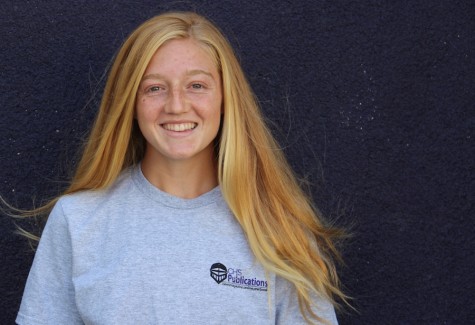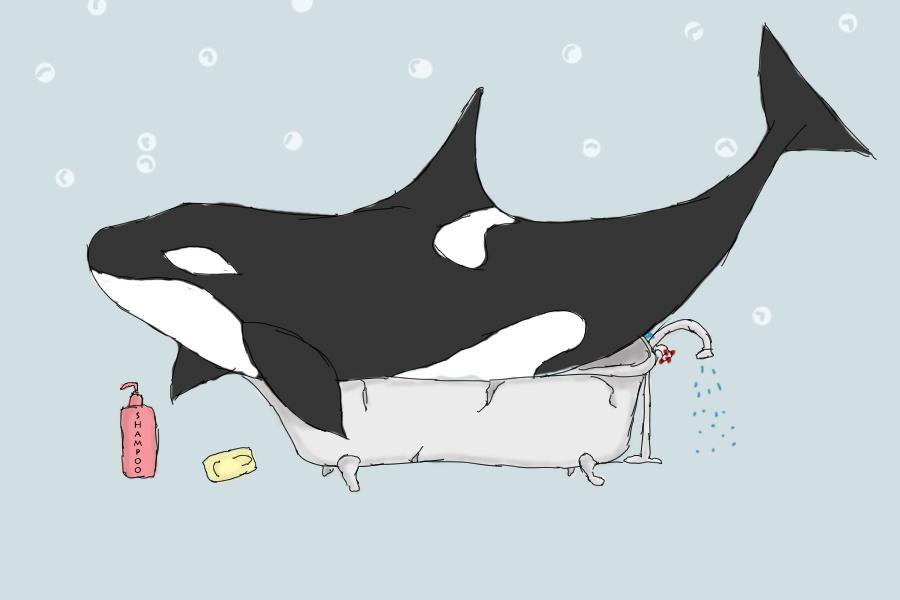SeaWorld swims into troubled waters
Face it. You have childhood memories of spending a summer day at SeaWorld, watching the fish splash around their aquarium, or getting soaked in the front row of the whale shows while watching the magnificent creatures rocket out of the water for a tasty fish treat. All these whales seem like they are better off in the loving hands of the animal trainers at SeaWorld, right?
Wrong. Whales in captivity are used solely for entertainment and as a result, they have a shorter life. Known to process emotions, these animals suffer from traumatic events due to the shock of the capture. Whales are in no better shape living in SeaWorld than in the wild.
Now fast forward to 2013. The documentary “Blackfish” revealed the unknown truths of SeaWorld like the capturing and treatment of the show animals and an environmental uprising ensued.
“Blackfish is the answer to a question I had, which was ‘Why did a top level SeaWorld trainer come to be killed by a killer whale?'” director of Blackfish Gabriela Cowperthwaite said during a visit to Carlsbad High School. “I didn’t think it was going to be a controversial film.”
SeaWorld’s original goal was to provide aid to animals in need and inspire younger generations to care for and rehabilitate injured and endangered wild animals until their release back into the wild. This all seems innocent on the surface, but there is a darker background behind the scenes.
Whales, which can swim up to 100 miles a day in the wild, are confined at SeaWorld to a fish tank as a living space. These whales would need to swim the circumference of the tank thousands of times in order to swim the same amount as in the ocean. This is similar to being trapped in your room, and walking in circles around to stop yourself from insanity and claustrophobia.
Although SeaWorld has contributed significantly within the science community through their rescue and research efforts, its captive whales have killed people along the way. Tilikum, the famous SeaWorld orca, has created a reputation for being wild and ruthless, even during shows. Scientists believe unnatural living conditions made Tilikum anxious, and as a result, he killed three people: Keltie Byrne, Daniel P. Dukes and Dawn Brancheau.
Today, Tilikum suffers from a collapsed dorsal fin: a side effect of malnourishment and different exercise patterns in captivity. But he isn’t the only whale who has attacked a human; the claustrophobic bathtubs that these whales are forced to live in cause them to act dangerously and unpredictably.
This is much like the behavior of related animals such as dolphins, who are often kept in captivity for human therapy or tourist swim programs. Parents allowing their kids to swim with a dolphin are putting the child in danger of getting injured or even killed.
Dolphin-therapy programs that capture and imprison animals are prohibited in some countries because of the increased stress to the animals and potential danger to humans when they snap.
SeaWorld states that whales live in “cohesive long-term social groups primarily composed of matrilineal groups that include a female whale, her offspring and often her grandchildren.” Yet these mariners isolate the whales from family in the wild for their own benefit at the park.
Since the origination of SeaWorld in 1963, its motive was to nurse injured and sick animals back to health, then return the animals to the sea. SeaWorld says it has rescued and treated 23,000 animals. Recently, the SeaWorld Animal Team rescued injured sea lions from Hurricane Katrina in 2005, they saved a sea lion that had been shot by fishermen in 2012 and they saved endangered sea turtles that were harmed during the 2010 BP oil spill.
Although these rescues seem great to help the wild, what about the animals that are not returned to their natural habitat?
Ever since the beginning of the program, SeaWorld has used an unconventional system of obtaining their whales and show animals. It has taken animals away from their families to later suffer in a completely different environment than the open ocean.
SeaWorld may seem like an innocent park with cheerful animals loving their limited-space-and-frozen-fish-diet life, but in reality, it is the opposite. That can change, however.
“The end goal [of ‘Blackfish’] would not be to shut down SeaWorld,” Cowperthwaite said. “The end goal is to encourage them to take the enormous profit … and put that toward evolving us out of animals for entertainment for good.”
As San Diegans, we are exposed to SeaWorld every day, with its TV commercials and ads on the highway. Who hasn’t been amazed by the animals trained to dive in and out of the water? But, we don’t have to stand idly by when whales and other sea creatures living at SeaWorld are malnourished and in misery.
The resolution to this problem is simple. Support SeaWorld as an ecological institute, but not as an entertainment enterprise. If you feel passionate about the treatment of animals at SeaWorld, you can sign this online petition.
And if you want to catch a real “killer” whale show, you can board a boat in Oceanside or downtown San Diego and sail out to see our migrating whales breech and spy hop in the open waters. It’s a much better experience than watching animals float in a concrete cage at SeaWorld.










